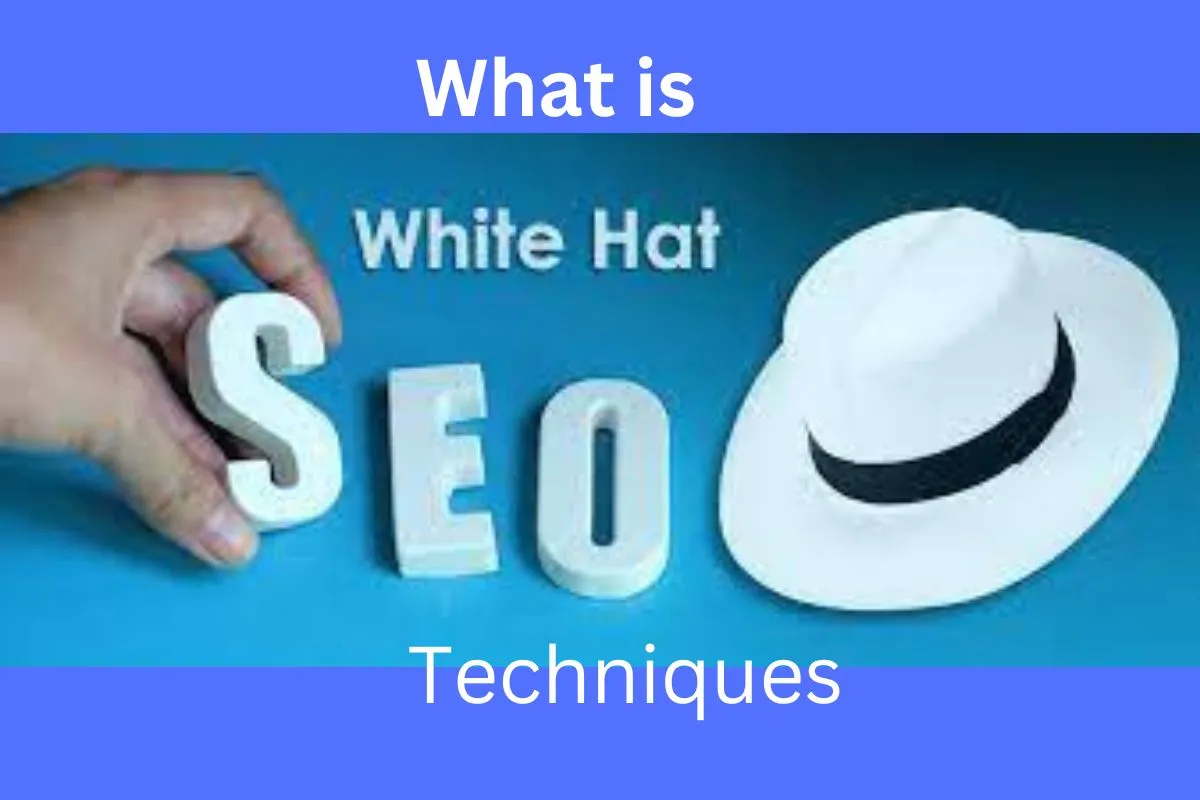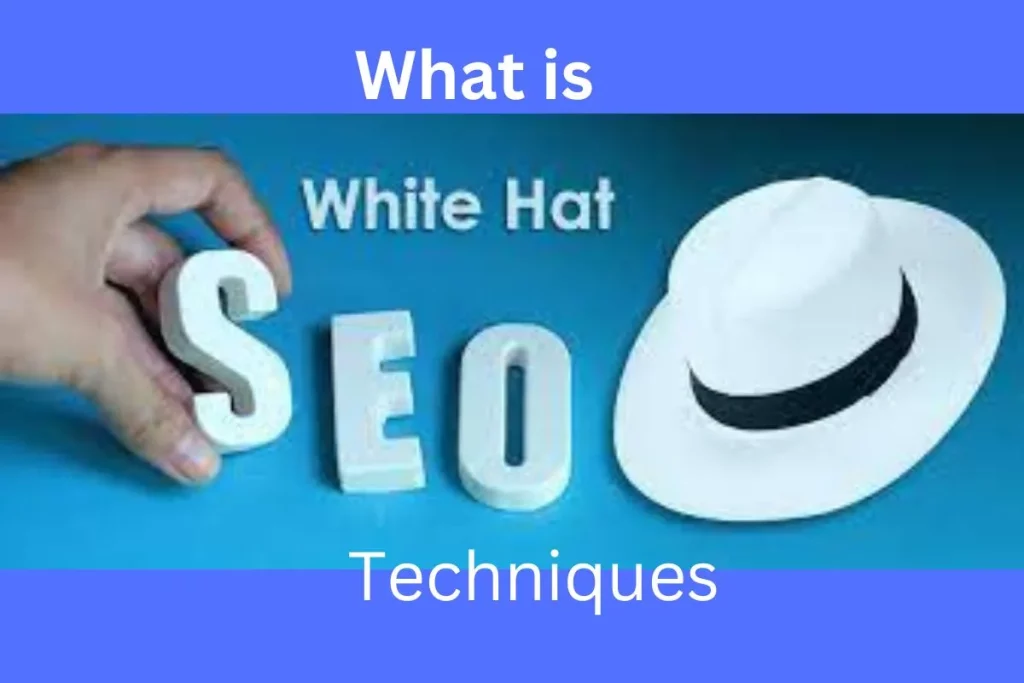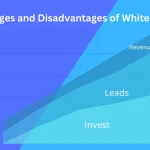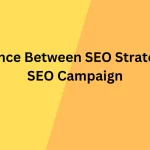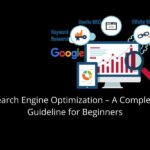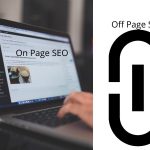White hat SEO refers to the use of ethical and best practices to improve the search engine rankings of a website. It involves optimizing a website’s content, structure, and HTML code to make it more appealing to search engines and users. In this article, I will describe about what is white hat SEO techniques:
- Creating high-quality, original content that is valuable and relevant to the audience
- Optimizing meta tags and descriptions for each page of the website
- Using descriptive and keyword-rich URLs
- Building a well-structured site with clear navigation and internal linking
- Acquiring natural, high-quality backlinks from other reputable websites
- Focusing on user experience and accessibility
By following these ethical and best practices, a website can improve its visibility and ranking in search engine results pages (SERPs) over time, without resorting to spammy or unethical techniques that can harm the website’s reputation and result in penalties from search engines.
Creating High-Quality, Original Content
Creating high-quality, original content means that the content is unique and not copied or plagiarized from other sources. It should also be well-written, informative, engaging, and relevant to the audience’s interests and needs.
To ensure that your content is valuable to your audience, you should focus on addressing their pain points and providing solutions to their problems. This can involve conducting research to better understand your target audience and their needs, interests, and preferences. You can also look at the types of content that are popular in your industry or niche and use this as a guide for developing your own content ideas.
Some tips for creating high-quality, valuable content include:
- Conducting keyword research to identify popular topics and phrases that your audience is searching for
- Using clear, concise language that is easy to read and understand
- Incorporating multimedia elements like images, videos, and infographics to make your content more engaging and shareable
- Providing in-depth, comprehensive information that addresses your audience’s questions and concerns
- Including examples and case studies to illustrate your points and add credibility to your content.
By creating high-quality, original content that is valuable to your audience, you can attract more traffic to your website, build your brand reputation, and establish yourself as an authority in your industry or niche.
Optimizing Meta Tags and Description
Optimizing meta tags and descriptions refers to the process of optimizing the HTML code of a webpage to improve its visibility and ranking in search engine results pages (SERPs). Meta tags and descriptions provide information about the content of a webpage to search engines and users, and optimizing them can help search engines better understand and index the content of a webpage.
There are several types of meta tags, but two of the most important ones for SEO are the meta title tag and meta description tag:
- Meta Title Tag: The meta title tag is an HTML tag that appears in the header section of a webpage and provides a brief, accurate description of the content of the page. It is one of the most important on-page SEO elements and appears as the clickable headline in search engine results pages. Optimizing the meta title tag involves including targeted keywords, keeping the title length to under 60 characters, and making it compelling and relevant to the content of the page.
- Meta Description Tag: The meta description tag is an HTML tag that provides a brief summary of the content of the page. It appears below the meta title tag in search engine results pages and can influence the click-through rate of the page. Optimizing the meta description tag involves including targeted keywords, keeping the description length to under 160 characters, and making it engaging and informative to the user.
By optimizing meta tags and descriptions, you can improve the visibility and ranking of your webpage in search engine results pages, increase the click-through rate of your page, and ultimately drive more traffic to your website.
Using Descriptive and Keywords-rich URLs
Using descriptive and keyword-rich URLs is an important aspect of on-page search engine optimization (SEO). A URL, or uniform resource locator, is the web address that is used to access a specific webpage.
Descriptive and keyword-rich URLs provide both search engines and users with a clear understanding of the content and purpose of the page. Here are some tips for creating descriptive and keyword-rich URLs:
- Use clear and concise language: URLs should be easy to read and understand for both users and search engines. Avoid using confusing symbols or codes, and use words and phrases that accurately describe the content of the page.
- Include targeted keywords: Including relevant and targeted keywords in your URL can help search engines understand the content and purpose of the page. However, be careful not to stuff too many keywords into the URL, as this can be seen as spammy and may actually harm your search engine rankings.
- Use hyphens to separate words: When creating a URL, it’s best to use hyphens to separate words. This makes the URL easier to read and understand for both search engines and users. Avoid using underscores or spaces, as these can cause issues with indexing and may not be recognized as word separators.
- Keep the URL short and sweet: In general, shorter URLs are better for SEO than longer ones. This is because shorter URLs are easier to read and remember, and are more likely to be shared and linked to by other websites.
Here’s an example of a descriptive and keyword-rich URL:
https://www.example.com/best-tips-for-creating-high-quality-content
In this URL, the words “best-tips-for-creating-high-quality-content” describe the content of the page and include relevant keywords such as “creating high-quality content.” By using descriptive and keyword-rich URLs, you can help improve the visibility and ranking of your webpage in search engine results pages, and make it easier for users to find and share your content.
Building a well-structured site with clear navigation and internal linking
Building a well-structured site with clear navigation and internal linking is an important aspect of on-page search engine optimization (SEO). A well-structured site makes it easier for both search engines and users to navigate and understand the content of your website. Here are some tips for building a well-structured site with clear navigation and internal linking:
- Plan your site architecture: Before you start building your site, it’s important to plan your site architecture. This involves organizing your content into a logical hierarchy, with the most important pages at the top level and the less important pages nested under them. This helps both search engines and users understand the structure and organization of your site.
- Use clear and descriptive navigation: Your site navigation should be clear and easy to understand, with descriptive labels that accurately describe the content of each page. Use a consistent navigation structure throughout your site, with links to important pages prominently displayed.
- Include a sitemap: A sitemap is a page on your site that provides a hierarchical overview of your site structure and all the pages on your site. Including a sitemap can help search engines find and index all of your pages, and can also provide a useful overview for users.
- Use internal linking: Internal linking involves linking to other pages on your site from within your content. This helps both search engines and users navigate your site, and can also help distribute link equity and improve the ranking of your pages. When using internal linking, use descriptive anchor text that accurately describes the content of the page you’re linking to.
- Use breadcrumbs: Breadcrumbs are a navigational aid that helps users understand their position within your site hierarchy. They typically appear near the top of the page and show the path that the user took to arrive at the current page.
By building a well-structured site with clear navigation and internal linking, you can make it easier for both search engines and users to navigate and understand your content, which can improve your search engine rankings, increase traffic to your site, and ultimately drive more conversions and revenue.
Acquiring natural, high-quality backlinks from other reputable websites
Acquiring natural, high-quality backlinks from other reputable websites is an important aspect of off-page search engine optimization (SEO). Backlinks, or inbound links, are links from other websites that point to your website. Search engines view backlinks as a signal of the quality and relevance of your content, and use them as a ranking factor in search results.
Here are some tips for acquiring natural, high-quality backlinks from other reputable websites:
- Create high-quality, shareable content: The best way to acquire backlinks is to create high-quality, shareable content that other websites will want to link to. This can include blog posts, infographics, videos, and other types of content that provide value to your target audience.
- Promote your content: Once you’ve created high-quality, shareable content, it’s important to promote it to your target audience. This can include sharing it on social media, reaching out to influencers in your industry, and submitting it to content aggregators and directories.
- Reach out to relevant websites: Another way to acquire backlinks is to reach out to relevant websites in your industry and ask them to link to your content. When reaching out to other websites, make sure to personalize your outreach and explain why your content is valuable and relevant to your audience.
- Guest posts on other websites: Guest posting is another effective way to acquire backlinks from other reputable websites. When guest posting, make sure to create high-quality content that provides value to the target audience of the website, and include a link back to your website in your author bio or within the body of the content.
- Monitor your backlinks: Finally, it’s important to monitor your backlinks to ensure that they are high-quality and relevant. Use tools like Ahrefs or Moz to monitor your backlinks and disavow any low-quality or spammy links that could harm your search engine rankings.
By acquiring natural, high-quality backlinks from other reputable websites, you can improve the visibility and ranking of your website in search engine results pages, drive more traffic to your site, and ultimately increase conversions and revenue.
Focusing on user experience and accessibility
Focusing on user experience and accessibility is an important aspect of on-page search engine optimization (SEO). Providing a positive user experience and ensuring that your site is accessible to all users, including those with disabilities, can improve your search engine rankings, increase engagement and conversions, and help you reach a broader audience.
Here are some tips for focusing on user experience and accessibility:
- Create a responsive website: A responsive website is designed to provide an optimal user experience across all devices, including desktops, laptops, tablets, and smartphones. By creating a responsive website, you can ensure that your content is easily accessible and readable on all devices, which can improve user engagement and search engine rankings.
- Use a clear and readable font: Use a font that is easy to read and accessible to all users, including those with visual impairments. Avoid using decorative fonts or fonts that are too small, as this can make it difficult for users to read your content.
- Make your website easy to navigate: Use clear and descriptive labels for your site navigation and ensure that it is easy to use and navigate. Make sure that your most important pages are prominently displayed and easily accessible.
- Provide alternative text for images: Alternative text, or alt text, is a text description of an image that is used by screen readers and other assistive technologies to describe the image to users with visual impairments. By providing alt text for your images, you can ensure that all users can understand the content of your site.
- Make your content accessible to all users: Ensure that your content is accessible to all users, including those with disabilities. This can include using headings to structure your content, using descriptive link text, and providing transcripts or captions for audio and video content.
By focusing on user experience and accessibility, you can improve the engagement and satisfaction of your users, which can ultimately improve your search engine rankings, drive more traffic to your site, and increase conversions and revenue.
Also Read:
Importance of White Hat SEO for Your Business
White hat SEO is an ethical and sustainable approach to optimizing your website for search engines. It involves using strategies and techniques that align with search engine guidelines, and that focus on providing a positive user experience and high-quality content. Here are some of the key benefits of using white hat SEO for your business:
Improved search engine rankings: By following search engine guidelines and using ethical strategies to optimize your website, you can improve your search engine rankings and drive more traffic to your site. This can increase your visibility, expand your reach, and improve your online reputation.
Higher-quality traffic: By focusing on creating high-quality, relevant content and optimizing your website for the right keywords, you can attract higher-quality traffic to your site. This can lead to higher engagement, longer time on site, and ultimately, more conversions.
Sustainability: White hat SEO is a sustainable approach to improving your search engine rankings. It focuses on long-term strategies and techniques that can provide lasting benefits, rather than quick fixes or spammy tactics that can harm your website’s reputation and get you penalized by search engines.
Better user experience: By focusing on creating high-quality, relevant content, improving site speed and navigation, and making your site accessible to all users, you can provide a better user experience for your visitors. This can lead to higher engagement, more positive reviews, and increased loyalty to your brand.
Improved brand reputation: Using ethical and sustainable SEO strategies can improve your brand’s reputation and online visibility. By focusing on creating high-quality, relevant content and engaging with your audience in a positive way, you can establish your brand as a trusted and authoritative source of information in your industry.
In summary, using white hat SEO techniques can help your business improve its search engine rankings, attract higher quality traffic, and establish a sustainable online presence. By focusing on providing a positive user experience and creating high-quality, relevant content, you can build a strong online reputation and grow your business over time.
Tips to Hire a White Hat SEO Expert
Hiring a white hat SEO expert can be a great way to improve your website’s search engine rankings and drive more traffic to your site. Here are some tips to help you hire a white hat SEO expert:
- Look for experience and credentials: When hiring a white hat SEO expert, it’s important to look for someone with experience and credentials in the field. Look for candidates with a proven track record of success, as well as certifications from organizations like Google or HubSpot.
- Ask for references and case studies: Before hiring a white hat SEO expert, ask for references and case studies that demonstrate their expertise and success in improving search engine rankings and driving traffic to websites.
- Look for transparency and communication: A good white hat SEO expert should be transparent about their strategies and methods, and should be willing to communicate with you throughout the process. Look for candidates who are willing to explain their strategies and provide regular updates on progress.
- Avoid guarantees and quick fixes: Be wary of white hat SEO experts who guarantee quick results or promise to get your website to the top of search engine rankings overnight. Effective white hat SEO requires time, effort, and a long-term strategy.
- Evaluate their approach to link building: White hat SEO experts should have a strong understanding of natural link building and should avoid using tactics like link buying or spammy backlinks. Look for candidates who focus on creating high-quality, shareable content and building relationships with other reputable websites in your industry.
By following these tips, you can hire a white hat SEO expert who can help you improve your website’s search engine rankings, drive more traffic to your site, and ultimately increase conversions and revenue.
End Words
I hope this article will help you to understand what is white hat SEO techniques and how to implement the techniques.
Read More Articles
